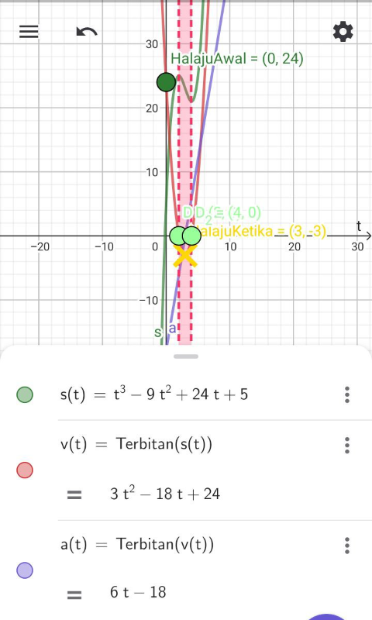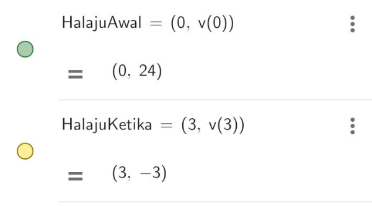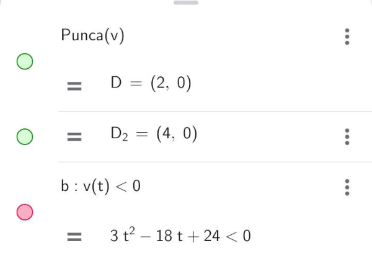
Example 7

[b]A particle moves along a straight line so that its displacement, s meters, after passing through a fixed point O is given by s=t[/b][sup]3[/sup][b] -9t[/b][sup]2[/sup][b]+24t+5, where t is the time in seconds, after the movement is started. Calculate[/b][b]a) the initial velocity, in ms[/b][sup]-1[/sup][b] ,of the particle,[/b][b]b) the instantaneous velocity, in ms[/b][sup]-1[/sup][b],at 3 seconds,[/b][b]c) the values of t, in seconds, when the particle is instantaneously at res[/b][size=85][size=100][b]t,[/b][/size][/size][b]d) the range of t, in seconds, when the particle moves to the left[/b]
[size=150][color=#ff0000][size=100][b]Solution[/b][br][/size][/color][/size]



[i]Given displacement function s =t3- 9t2+24t+5,and velocity function, v==3t2-18t+24[br][/i][i][br][br]a) [/i]When initial velocity,t=0,v=3(0)2-18(0)+24[br] v=24[br] Hence, the initial velocity of the particle is 24 ms[sup]-1[/sup].b) When t=3,v=3(3)2-18(3)+24=27-54+24=-3[br] Hence, the velocity at 3 seconds is -3ms[sup]-1[/sup].[br][br]c) When the particle is at rest, v = 0.[br] 3t[sup]2[/sup]-18t+24=0[br] t[sup]2[/sup]-6t+8=0[br] (t – 2)(t – 4) = 0[br] t=2 or t=4[br] Hence, the particle rests instantaneously at 2s or 4s.[br][br][br]d) When particle moves to left, v<0[br] 3t[sup]2[/sup]-18t+24<0[br] t[sup]2[/sup]-6t+8<0[br] (t-2)(t-4)<0[br] From the graph, the solution is 2< t < 4.[br] Hence, the particle moves to the left when 2< t < 4.